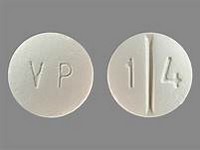Ethambutol hydrochloride
CLINICAL USE
Antibacterial agent:Tuberculosis
DOSE IN NORMAL RENAL FUNCTION
15 mg/kg/day or 30 mg/kg 3 times a week (supervised dosing)
PHARMACOKINETICS
DOSE IN RENAL IMPAIRMENT
GFR (mL/MIN)
DOSE IN PATIENTS UNDERGOING RENAL REPLACEMENT THERAPIES
IMPORTANT DRUG INTERACTIONS
Potentially hazardous interactions with other drugs
ADMINISTRATION
Reconstition
–
Route
Oral
Rate of Administration
–
Comments
–
OTHER INFORMATION
Monitor plasma levels. Dosages should be individually determined and adjusted according to measured levels and renal replacement therapyPeak levels are taken 2–2.5 hours post dose (2–6 mg/L or 7–22 micromol/L); trough is taken pre dose (<1 mg/L or <4 micromol/L)Baseline visual acuity tests should be performed prior to initiating ethambutolDaily dosing is preferred by some specialists to aid compliance and ensure maximum therapeutic effect
